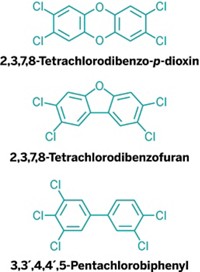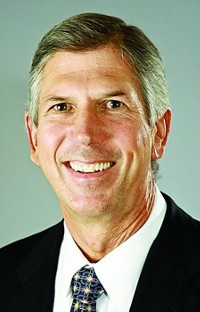Advertisement
Grab your lab coat. Let's get started
Welcome!
Welcome!
Create an account below to get 6 C&EN articles per month, receive newsletters and more - all free.
It seems this is your first time logging in online. Please enter the following information to continue.
As an ACS member you automatically get access to this site. All we need is few more details to create your reading experience.
Not you? Sign in with a different account.
Not you? Sign in with a different account.
ERROR 1
ERROR 1
ERROR 2
ERROR 2
ERROR 2
ERROR 2
ERROR 2
Password and Confirm password must match.
If you have an ACS member number, please enter it here so we can link this account to your membership. (optional)
ERROR 2
ACS values your privacy. By submitting your information, you are gaining access to C&EN and subscribing to our weekly newsletter. We use the information you provide to make your reading experience better, and we will never sell your data to third party members.
Environment
Dioxins, Assessed At Last
Pollution: After years of study, EPA sets safe level of exposure to the most toxic congener
by Cheryl Hogue
February 27, 2012
| A version of this story appeared in
Volume 90, Issue 9

After 21 years of contentious scientific analysis, the Environmental Protection Agency has established a safe level of exposure to the most toxic form of dioxin.
EPA set a safe daily dose of 0.7 picograms of 2,3,7,8-tetrachlorodibenzo-p-dioxin (TCDD) per kilogram of body weight. TCDD is the most potent congener of the dioxins, which generally are unintentional by-products of manufacturing processes involving chlorine and burning of biomass or waste.
Eventually, this defined level of safe exposure will affect the degree—and cost—of cleanups of soil and of industrial air and water releases polluted with dioxins. This category of chemicals consists of chlorinated dioxins and furans and certain polychlorinated biphenyls. These substances can trigger similar adverse health effects, but their potencies vary.
The exact regulatory impacts of the agency’s determination, which was released on Feb. 17, are as yet uncertain. EPA’s new level “will serve as the cornerstone of the agency’s initiatives to protect public health from chemical contaminants and provide the necessary guidance to states and public health agencies to minimize dioxin exposure,” says Olga Naidenko, a senior scientist with the Environmental Working Group, an activist group.
The American Chemistry Council, an industry organization that has invested much time and energy in influencing EPA’s work on this assessment, calls the agency’s conclusions “flawed.”
Lois Marie Gibbs, executive director of the Center for Health, Environment & Justice, an environmental group that has focused on dioxin issues for years, hails the long-awaited completion of the agency’s effort. “The American people,” she says, “won a major victory against the chemical industry, which has been working behind closed doors for decades to hide and distort the truth about the dangers of dioxin.”
Data in EPA’s annual Toxics Release Inventory indicate that U.S. industry has slashed its releases of dioxins in the past two decades (C&EN, Feb. 6, page 26). Backyard waste burning is the major source of dioxins in the U.S. today.
The EPA limit is based on two studies. One found adverse reproductive effects in men exposed to TCDD as boys. The other found hormonal effects in infants born to mothers who had high levels of exposure.
People are exposed to dioxins mainly by eating meat, poultry, dairy products, fish, or eggs. However, EPA claims that “most Americans have only low-level exposure to dioxins,” adding that this “does not pose a significant health risk.”
The agency’s document examines health effects other than cancer from TCDD exposure. They include chloracne, a severe skin disease producing acne-like lesions; developmental and reproductive effects; damage to the immune system; hormonal disruption; and, possibly, mild liver damage. The agency is still working on a second document focusing on cancer hazards of TCDD.
The assessment, which EPA launched in 1991 to update a 1985 document describing the cancer hazards of TCDD, has faced many delays. Throughout the years, polluting industries—including chemical companies—have faulted EPA’s work. Community and public health groups, meanwhile, have pressured the agency to finish the review.
“After 21 years in the making, the dioxin assessment is in the hands of the American people,” says Paul T. Anastas, who oversaw release of the report on his final day as EPA’s top scientist (C&EN, Jan. 16, page 9).
“I quite honestly never thought this report would ever see the light of day,” Gibbs says.





Join the conversation
Contact the reporter
Submit a Letter to the Editor for publication
Engage with us on Twitter